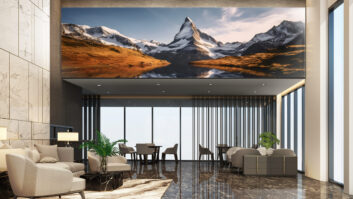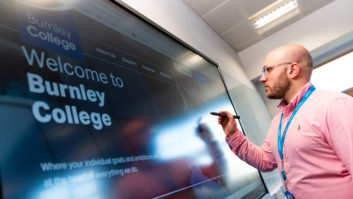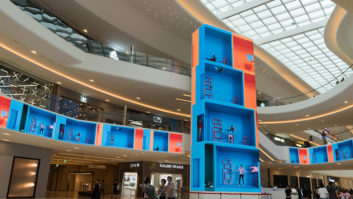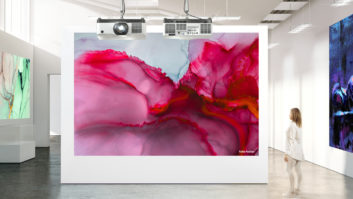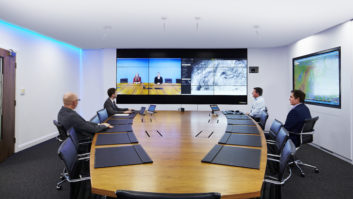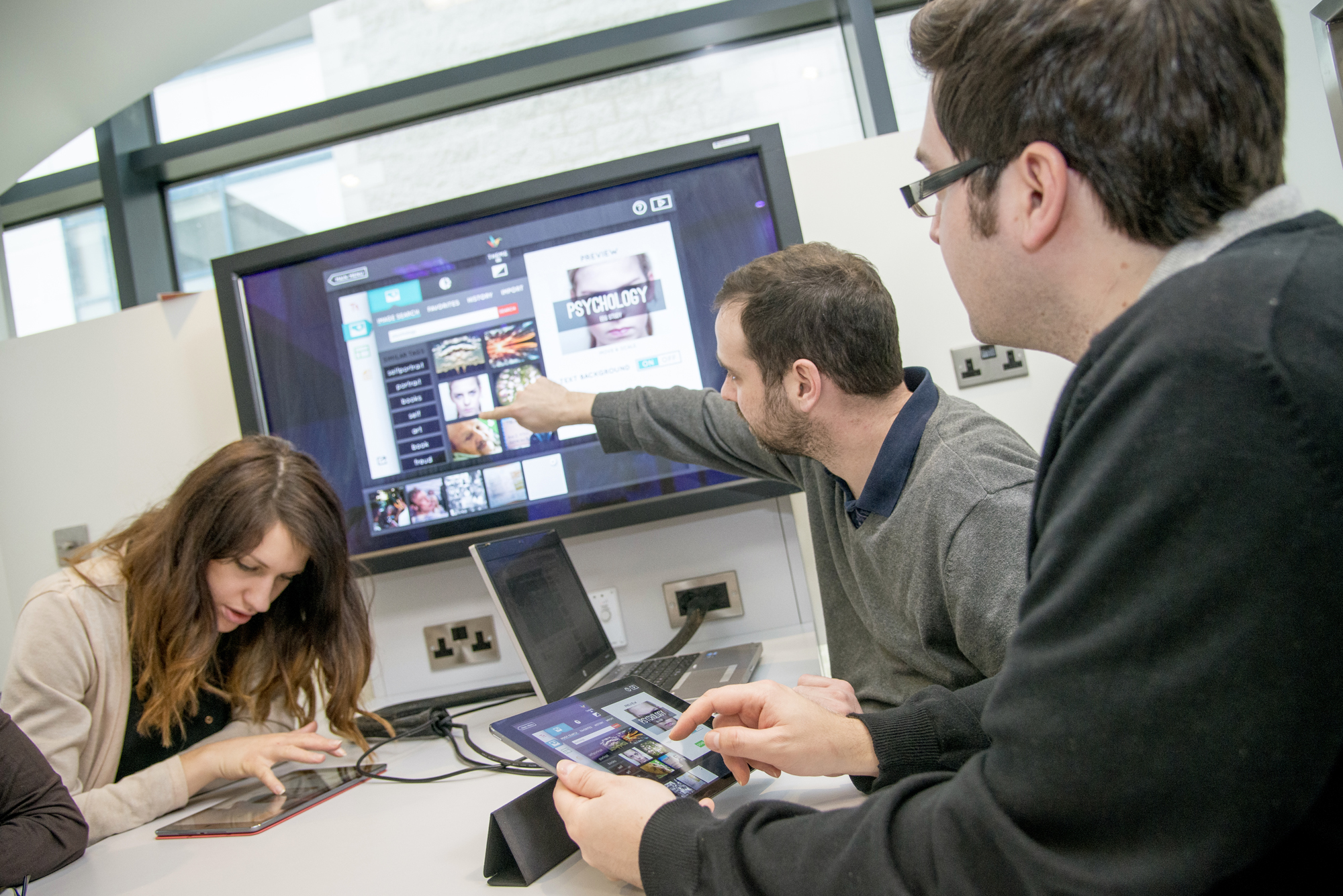
Responding directly to users’ commands through a touch interface allows displays to be more intuitive and responsive. It is fast becoming the preferred method across most large-screen market sectors. Steve Montgomery investigates recent advances.
The ability to control an application by touching a display screen has evolved significantly over the past few years. Familiarity with touch-sensitive operation on phones and tablets has brought about ubiquity of interaction that is making touch the preferred, and frequently the expected, method.
“As younger people brought up on Smartboards enter the workplace, there is evidence of a new wave of expectation that screens should be interactive and intuitive,” believes Jeremy Stewart, director, U-Touch Group. “Children regularly touch TVs and screens and are often disappointed when they are not interactive.” Beyond single, dual and multi-touch response, other interactive sensing devices, such as cameras and motion sensors, detect and respond to users’ gestures, faces and even their moods.
Any location that employs a large screen display to communicate with viewers is a contender: huge volumes of interactive displays have been deployed in self-service kiosks, museums, transport hubs and retail markets. Expanding growth areas include the education and corporate sectors where collaboration and group working are becoming more prevalent.
Jon Sidwick, vice president of distributor Maverick, notes: “A significant area in which interactivity is changing usage is in the transition from whiteboards to flatpanels in the education sector. In the UK and the Netherlands, flatpanels are already taking the majority of sales. The expansion of interactivity is continuing in all sectors, particularly corporate meeting areas, huddle rooms, workflow and brainstorming areas.”
Daniela Dexheimer, product manager solutions, marketing and business development for NEC Display Solutions Europe, agrees: “Interactive displays in classrooms and corporate meeting rooms enable teachers and executives to present in a much more creative way. With dedicated software packages, people are able to not just present and annotate but share and collaborate with multiple participants across multiple devices. This level of interaction offers a compelling medium and encourages participation and engagement. In the educational environment it provides an effective learning tool and within business, a means to increase productivity and efficiency.”
LCD screens with integrated touch sensors offer advantages over projectors. Consequently they are displacing projection systems across the board. “Large integrated flatpanels are winning over projection systems in education and business applications,” notes Peter Mytton-Bayley, technical sales engineer at LG. “One-piece, integrated devices are easier to install and configure; projectors still have issues with lamp life and maintenance. Larger interactive displays of 50in and above are becoming much more economic and competing successfully in these sectors, when total cost of ownership is considered.”
This has led manufacturers, such as LG and NEC, to develop their own range of touch displays rather than rely on third-party add-on solutions. Integrated design brings advantages. Overlays, although seemingly a lesser investment, actually introduce more cost and the need for an additional bezel affects the aesthetic design. The major disadvantage of touch overlays is the heightened space between the glass and the LCD panel, which creates misalignment between the image and perceived touch point. The air gap between the overlay and the display surface can also trap moisture, causing condensation to collect in the viewing area.
Touch technologies
Several different technologies are used to achieve touch capability, each developed and used in different areas of application with specific usage criteria. By far the most common system in use for large flatpanel displays is infrared ‘beam-break’ technology. Using a series of infrared transmitters and receivers, the presence and location of users’ fingers can be detected and located. “IR is a tried-and-tested technique for large-format displays and with judicious placement of transmitters and receivers, problems associated with ambient light and operation in direct sunlight can be overcome, as can false detection from stray objects and palms,” points out Mytton-Bayley.
One of the limiting factors is the ability to apply them to larger screen sizes of 40-46in and above. Stewart adds: “Users want bigger and better all the time. The main challenge we see is scaling performance and integrity over larger sizes. For example, optical is fundamentally flawed for screens over 65in; projected capacitance attracts major cost issues over 55in. But these aspects will be addressed in time.”
Simon Perry, director, DisplayLite, points out another: “We are experiencing greater demand for touchscreens of 70in and larger. Units of this size can be very heavy. In some cases specialist lifting equipment may be required to move and lift the touchscreen into position. Many third-party stand manufacturers are now offering motorised stands and platforms with fully adjustable height and tilt capability.”
displaylite LCD monitor and touchscreen technology
LG displays
NEC Display Solutions
Distributor TD Maverick
utouch touchscreen products
